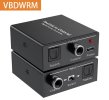goofytwoshoes
Member
- Joined
- Jan 26, 2021
- Messages
- 8
- Likes
- 11
GLM will save as many calibrations as you like. You can calibrate for a single listening position, and then again with several listening positions, and easily toggle between them to compare. I listen alone, so did not calibrate for several places. I sometimes recline on my couch so calibrated for that position, too, it does make a slight difference when I toggle with main listening position.@goofytwoshoes - In your experience, assuming a SAM setup in a 2.1 configuration in a living room for music listening purposes, would you still calibrate with GLM considering the fact that one may not always sit in the assigned MLP? I know GLM can accommodate for averaging for a wider listening area and that is what I'd opt for but my point is; it's better to have calibration in place even for off-axis listening. My source will probably be a Wiim Ultra. Hmmm, I take note of the interface mismatch (RCA vs XLR). I know the Gen monitors incorporate level controls but is it better to invest in a professional RCA to XLR converter for better dynamics? I guess one could opt for an Eversolo unit that has balanced outputs but the price difference is not small.
Furthermore, has anyone had the opportunity to compare the KALI SM-5 to the Gen Ones? @Ellebob - you might be able to answer that question.
If you will use the Wiim Ultra only to feed digital to Genelec speakers, from an Ethernet connection, you are paying for features that you will not use.
The Neutrik converter uses a transformer to match the 75 Ohm input on BNC to 110 Ohm output on XLR AES cable. The Neutrik (recommended by Genelec) is very inexpensive, and even more so buying used on eBay. Canare is cheaper, still. Both have BNC inputs, so an RCA to BNC coaxial cable is needed.
XLR outputs on Eversolo are analog, I think. You can connect to the analog inputs on the Genelecs, but that adds an extra Digital to Analog coversion, which is undesirable. Eversolo has digital out on coax, but if not using it's other features, a big waste of money, maybe.
Does the Kali include a mic/software calibration option? If not, IMHO there is no way it can equal Genelec with the GLM kit. Also, read about the GRADE report on Genelec's website.
I also have a pair of Genelec 8030C speakers beside the 8330A, on identical stands. With GLM calibration off, there is little or no difference between them. With calibration on, difference is night and day, even in a room that is far from ideal. This is with the 7350A sub bypassed. With the sub in circuit, the bass is nicely reinforced and you have the option of increasing/decreasing volume in the software to your heart's content. I have a pair of the subs, but in my room the second one is not needed. In large rooms and/or at very high volume, the second one may help.
Also, I control volume/mute and on/off with Genelec's wireless 6-button remote. It is excellent.
Last edited:
